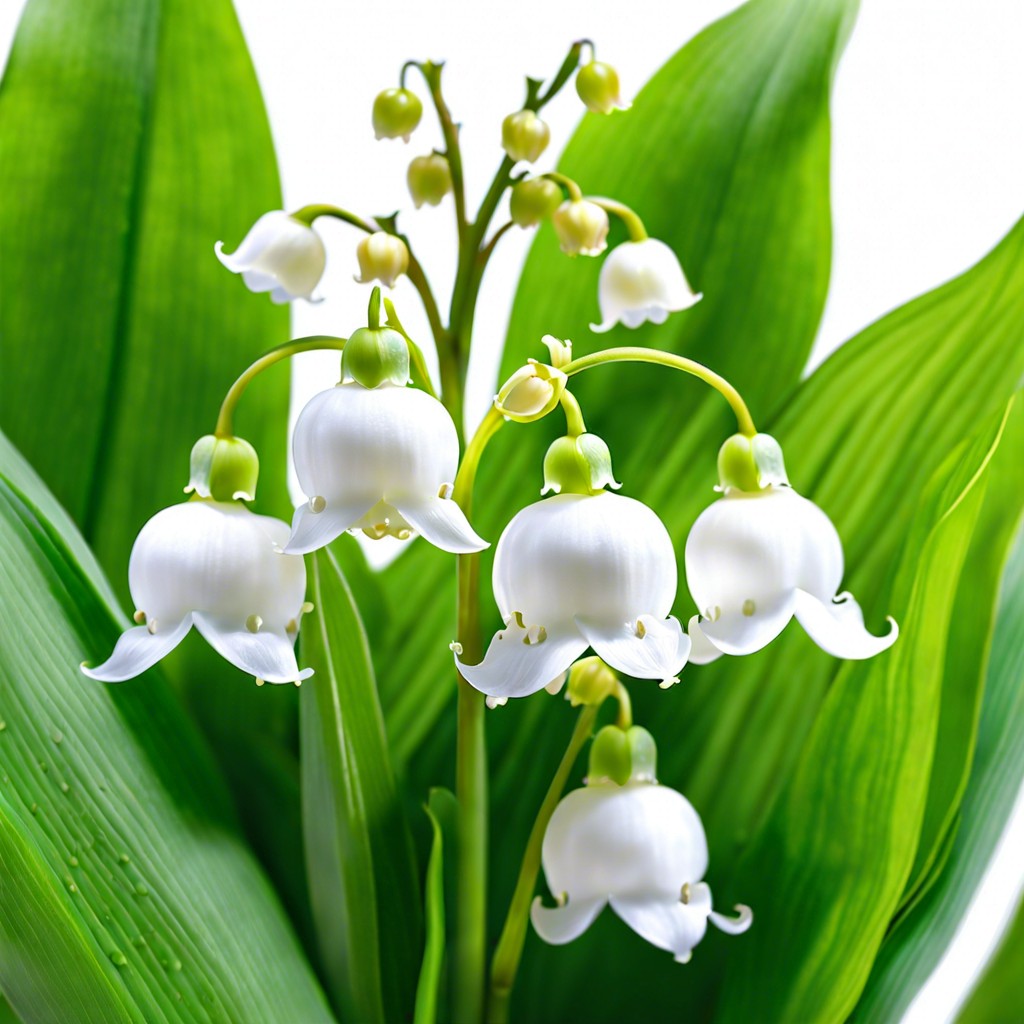Discover the spiritual significance of the lily of the valley and how it symbolizes purity, humility, and renewal.
Delicate and fragrant, the lily of the valley holds a treasure trove of meanings and symbolism. From its representation of purity and humility to its connections with happiness, renewal, and religious significance, this enchanting flower weaves a captivating story through folklore, mythology, and cherished traditions. Dive in to explore its diverse roles in ceremonies and the rich tapestry of beliefs surrounding this beloved bloom.
Key takeaways:
- Symbolizes purity, humility, and renewal.
- Represents growth and new beginnings in spring.
- Linked to the Virgin Mary’s innocence and purity.
- Associated with happiness and joyous celebrations.
- Frequently used in weddings and religious ceremonies.
Symbolism of Purity and Humility

Lily of the valley is often regarded as a symbol of purity due to its stark white, bell-shaped flowers. This visual representation naturally brings to mind thoughts of innocence and cleanliness, as if the flowers themselves have been untouched by the complications of life.
Furthermore, these delicate blooms bow their heads slightly, which many interpret as a gesture of humility. They don’t boast or vie for attention but offer a modest presence. This humble stance can remind us to stay grounded and appreciate the simple, quiet moments in life.
Additionally, lily of the valley grows in shaded, secluded areas, which can symbolize the beauty found in humility and the virtue of remaining modest and unassuming. These qualities make the plant a lovely gift for someone who embodies these traits or as an aspirational reminder for oneself.
Association With Happiness and Renewal
Lily of the valley is often linked to feelings of happiness and renewal. This association comes from its delicate, pristine blooms that often mark the arrival of spring, symbolizing new beginnings and fresh starts.
The flower’s sweet fragrance can uplift spirits, making it a popular choice to brighten one’s day. Its small, bell-shaped flowers appear as tiny, joyous heralds of rejuvenation.
In literature, lily of the valley is frequently described in scenes of rebirth and joy, further cementing its role as a symbol of happiness. The sight of these blossoms after a long winter embodies the essence of renewal.
Significance in Religious Contexts
In Christianity, the lily of the valley is often linked to the Virgin Mary. Its delicate bell-shaped flowers symbolize her humility and purity. The plant’s white blossoms are seen as a reflection of her innocence.
Additionally, lily of the valley is mentioned in the Bible, representing the Second Coming of Christ. Many believers see this flower as a sign of renewal and hope in their faith.
In some traditions, the flower is also associated with the tears of Eve after she was expelled from the Garden of Eden. This adds a layer of compassion and redemption to its symbolism.
During religious ceremonies, especially those honoring Mary, these flowers are frequently used in decorations, enhancing their sacred significance.
Role in Folklore and Mythology
In folklore, lily of the valley is often linked to enchanting tales. One popular belief is its association with fairies as their chosen flower, symbolizing the delicate beauty of the fairy realm.
In mythology, it’s tied to the story of the god Apollo, whose tears created the plant. This tale underscores the themes of purity and renewal, tying back to the broader symbolism of the flower.
Another fascinating point is its connection to mai-lily celebrations in parts of Europe, where it heralds the arrival of spring. People see it as a harbinger of new beginnings and joy.
Usage in Ceremonies and Traditions
In weddings, lily of the valley is often integrated into bridal bouquets, symbolizing the fresh start of a new chapter and the purity of love. This delicate flower also represents the return of happiness, making it a favorite in springtime celebrations.
In religious ceremonies, especially within Christian traditions, it’s often utilized during Easter to represent Christ’s resurrection and the promise of renewal. Its bell-shaped blooms are viewed as a metaphor for the heavenly trumpet calling believers to God.
Memorial services sometimes feature lily of the valley to convey the innocence of the soul and the peace that follows a life well-lived. Additionally, it’s common in the May Day tradition in some European cultures, where people exchange the flowers to promote good luck and happiness. This gesture emphasizes community connection and well-wishing.





